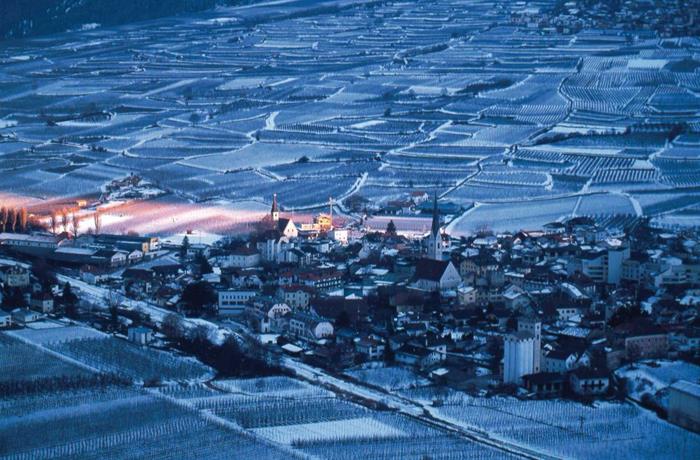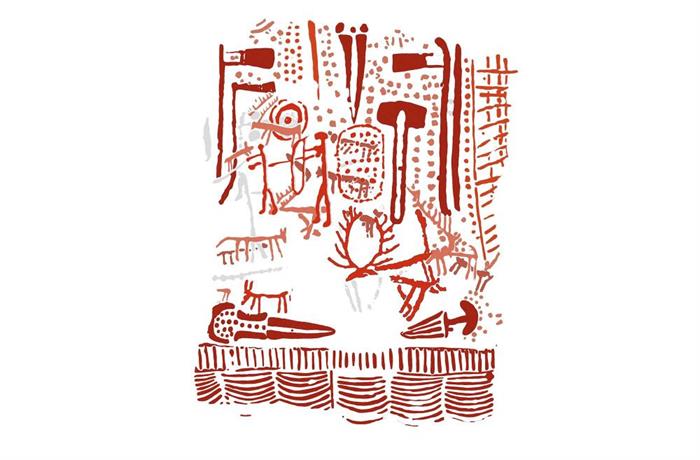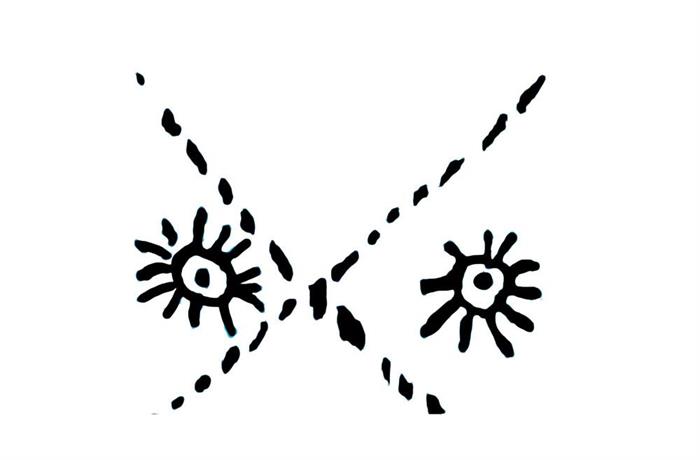Che cos’è un menhir? // What is a menhir?
Un menhir è un megalito del periodo preistorico eretto da persone che spesso rappresenta una persona. La parola „menhir“ deriva dal bretone e significa: maen pietra‘,hir lunga. I menhir rappresentano un fenomeno largamente diffuso dell’età del rame tra il 4° e il 3° millennio a.C. noto in quasi tutta l’Europa. Nell’arco alpino di distinguono sei gruppi:
- gruppo della Lunigiana (Liguria, Toscana)
- gruppo di Aosta-Sion (Aosta, Canton Vallese)
- gruppo della Valcamonica-Valtellina (Valcamonica, Valtellina)
- gruppo Lessinia (Veneto occidentale)
- gruppo Brentonico (Val d’Adige meridionale)
- gruppo della Val d’Adige (Alto Adige, Val di Non, Valle del Sarca)
A menhir is a towering stone block erected by humans in prehistoric times that often represents humans. The word „menhir“ derives from Breton and means: maen stone‘,hir long. Other names for menhirs are picture stones and figure stones. Menhirs represent a widespread phenomenon of the Copper Age between the 4th and the 3rd millennium BC that is known nearly all around Europe. We can distinguish six groups in the Alpine arc:
- Lunigiana group (Liguria, Tuscany)
- Aosta-Sion group (Aosta, Valais)
- Valcamonica-Valtellina group (Valcamonica, Valtellina)
- Lessinia group (western Veneto)
- Brentonico group (southern Adige Valley)
- Adige Valley group (South Tyrol, Val di Non, Valle del Sarca)

Laces il 23 dicembre // Laces on 23 December
I menhir del gruppo della Val d’Adige // The menhirs of the Adige Valley group
Fin’ora in Alto Adige e in Trentino sono stati trovati 22 menhir in 11 posti diversi: due a Vezzano nelle vicinanze di Laces, altri a Tecelinga, Velturno, Laion, Fiè allo Sciliar, Santa Verena, Termeno, Revò, quattro a Lagundo e otto a Arco. A causa dei motivi dell’abbigliamento e degli oggetti rappresentati fanno parte del cosiddetto gruppo della Val d’Adige. I menhir del gruppo della Val d’Adige consistono di cosiddetti menhir maschili, femminili e neutri. Occasionalmente s’incise la faccia nonché i seni per i cosiddetti menhir femminili. Un elemento tipico del gruppo della Val d’Adige sono le strisce verticali che possono essere interpretate come la rappresentazione di un mantello. L’indumento dell’Uomo del Similaun, composto di diverse strisce di pelo alternatamente chiare e scure, potrebbe essere un tale mantello. I menhir maschili si caratterizzano per fibbie (spilloni) e una cintura in forma di ghirlanda. Inoltre portano asce, pugnali, arco e frecce sopra la cintura. I menhir femminili invece hanno un collier e spirali doppie.
22 menhirs have been discovered in 11 different places in South Tyrol and Trentino so far: two in nearby Vezzano, others in Tecelinga, Velturno, Laion, Fiè allo Sciliar, Santa Verena, Termeno, Revò, four in Lagundo and eight in Arco. They belong to the so-called Adige Valley group due to the motifs on the clothes and the represented objects. The menhirs of the Adige Valley group consist of so-called male, female and neutral menhirs. The face is occasionally carved out as are the breasts for so-called female menhirs. Typical for the Adige Valley group are the vertical stripes, which can be interpreted as the representation of a cloak. The outer garment of Ötzi the Iceman, which is composed of several alternating light and dark fur strips, could be such a cloak. Male menhirs are characterized by cloakpins (hammer head pins) and a garland-shaped belt. They also carry axes, daggers as well as bow and arrow above the belt. Female menhirs have a necklace and double spirals.
I motivi sul menhir di Laces // The motifs on the Laces menhir
Oltre alle caratteristiche iconografiche del gruppo della Val d’Adige il menhir di Laces presenta anche simboli del gruppo lombardo della Valcamonica. Ciò testimonia che le aree culturali della regione montana del Parco Nazionale dello Stelvio di oggi sono connessi da migliaia d’anni. Il menhir di Laces presenta diverse fasi di realizzazione per cui alcuni motivi si sovrappongono. L’archeologo provinciale Dr. Hubert Steiner li descrive nel seguente modo:
In addition to the iconographic characteristics of the Adige Valley group the Laces menhir also shows symbols of the Lombardic Valcamonica group. That proves that the cultural areas of the mountain region of today’s Stelvio National Park have been connected with each other for thousands of years. The Laces menhir shows different development phases, which is why some motifs overlap. The provincial archeologist Dr. Hubert Steiner describes them in the following way:
Lato anteriore: MOTIVI DELLA PRIMA FASE
Le „rappresentazioni standard“ di un menhir maschile del gruppo della Val d’Adige risalgono alla fase più vecchia:
- C’è una cintura arruffata nella parte inferiore.
- Ci sono due asce a sinistra e altre due a destra sopra la cintura in posizione verticale a fianco. Probabilmente ce n’è un’altra nella parte superiore dell’immagine.
- Due pugnali in posizione orizzontale che puntano al centro si trovano sopra la cintura. Il pugnale a sinistra con nervatura assiale ha un pomo tondo ed è pieno di buche. Il pugnale a destra con il pomo a forma di fungo rappresenta un cosiddetto “pugnale di Remedello".
- Un pugnale in posizione verticale appare nella parte superiore del menhir.
- L’oggetto al centro è un altro simbolo di status: Si tratta di uno spillone o di un’ascia martello, il che è più probabile a causa delle sue dimensioni. Alcuni oggetti sono accompagnati da file di buche.
- Nella parte in alto a destra ci sono diversi solchi obliqui che portano al lato stretto del menhir e che sono pieni di file di linee. Si tratta senza dubbio della rappresentazione di un indumento che evidentemente rimane aperto davanti.
Front: MOTIFS OF THE 1ST PHASE
In the oldest phase, the picture stone was equipped with the “standard representations“ of a male menhir of the Adige Valley group:
- There is a ruffled belt in the lower part.
- There are two vertically positioned and laterally placed axes to the left and two to the right above the belt. There is probably another one at the upper edge.
- Above the belt there are two horizontally positioned daggers pointed to the center. The dagger on the left with midrib has a globular pommel and is filled with dimples. The dagger on the right with a mushroom-shaped pommel represents a so-called „Remedello dagger".
- A vertically positioned dagger appears in the upper part of the picture stone.
- Another status symbol is the centrally positioned object: It is either a hammer head pin or a hammer axe, which is more probable due to the size. The objects are partially accompanied by rows of dimples.
- The upper right half shows several oblique grooves that lead to the narrow side of the picture stone and are filled with rows of lines. They undoubtedly represent a garment apparently worn open at the front.

Motivi // Motifs
MOTIVI DI ALTRE FASI // MOTIFS FROM OTHER PHASES
Nelle successive fasi di realizzazione si vedono influssi del gruppo della Valcamonica-Valtellina. Alcune rappresentazioni si sovrappongono, il che indica che sono state realizzate in diverse fasi.
- La rappresentazione di un cacciatore con arco e freccia è unica nel suo genere per il gruppo della Val d’Adige.
- Dietro il cacciatore c’è un oggetto di forma rettangolare-ovale con puntini che probabilmente rappresenta una rete usata durante la caccia.
- Davanti al cacciatore c’è una figura.
- Sul lato destro ci sono due cervi.
- A sinistra sopra il pugnale si trova presumibilmente un cane.
- Un carro è stato identificato sopra il cane, il che però rimane incerto. Probabilmente si tratti di altri due animali.
The following development phases show influences of the Valcamonica-Valtellina group. The representations partially overlap, which indicates that they developed during different phases.
- The hunter with bow and arrow is a representation that is unique for the Adige Valley group.
- Behind him there is a rectangular-oval shaped object filled with dots that is probably a net for hunting.
- There is a figure in front of the hunter.
- Two deer are represented on the right side.
- There is probably a dog above the dagger on the left side.
- A cart was identified above it, which, however, remains questionable. They probably are two other animals.
Lato posteriore // Back
Il lato posteriore è caratterizzato dagli elementi tipici del gruppo della Val d’Adige: mantello e cintura. La rappresentazione dei soli e della grande X invece rimane emozionante. Prof. Dr. Annaluisa Pedrotti accenna alla possibilità che il lato posteriore sia stato usato come menhir femminile. In questo caso i soli sono i seni. Questi simboli potrebbero però anche riferirsi a un fenomeno del sole che si ripete ogni anno un giorno prima di Natale al luogo di ritrovamento del menhir alla Chiesa Santa Maria in Colle.
The backside is characterized by the typical representations of the Adige Valley group: the cloak and the belt. The representation of the suns and the large X, however, remains exciting. Prof. Dr. Annaluisa Pedrotti refers to the possibility that the backside of the menhir could have been used as a female figure stone. In this case, the suns stand for the breasts. However, these symbols might also refer to a sun phenomenon that takes places every year one day before Christmas at the menhir’s site of the find at the Church of Our Dear Lady on the Bichl.

Motivi // Motifs